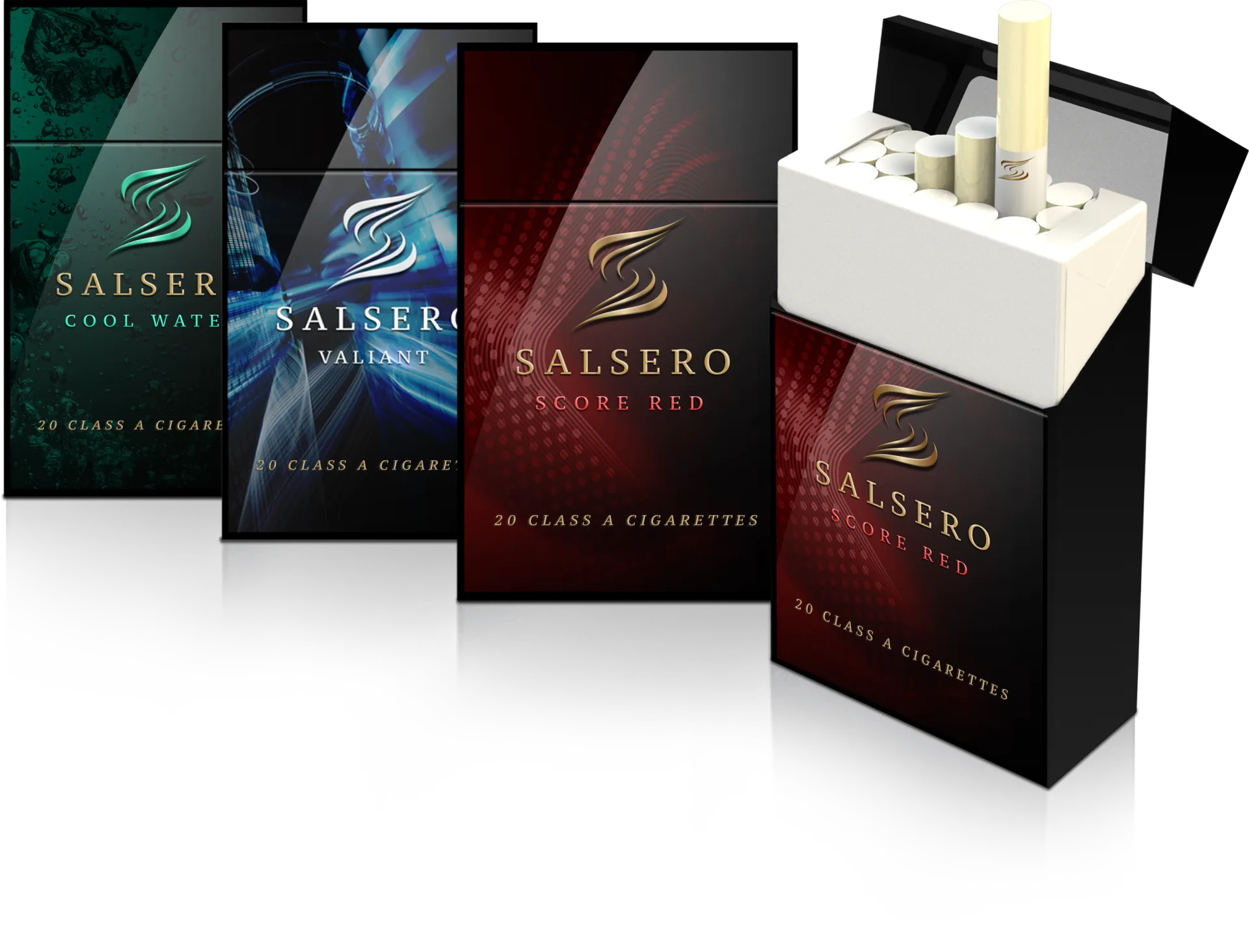Cigarette packaging plays a big role in product presentation and brand identity. Two major types of boxes are used in the industry: rigid boxes and folding cartons. Both options have their own strengths, costs, and purposes. This guide will compare these packaging styles in detail to help understand which one works best for different needs.
Material Strength and Durability
Rigid boxes are made with thick, high-quality paperboard that doesn’t fold or collapse. These boxes are solid and firm. On the other hand, folding boxes are made from thinner materials that can easily bend or flatten.
Rigid boxes provide more protection. They are tough and don’t lose shape easily. This makes them a great choice for keeping cigarettes safe during shipping or display. Folding boxes are lighter and not as protective. They can be crushed or damaged more easily when pressure is applied.
When it comes to durability, rigid boxes win. Cigarettes are fragile, and rigid packaging helps keep them in shape. Retailers also prefer this type because the box stays neat and presentable on shelves. Folding boxes, while good for saving space, might not hold up as well under pressure or over time.
If your brand focuses on long-lasting quality and premium look, rigid packaging is more suitable. However, if your main goal is cost-saving and easy transportation, folding boxes may be better. Still, folding cigarette boxes may not provide the same protection or premium appeal as rigid ones.
Visual Appeal and Branding
A cigarette box is more than just a container. It represents the brand and often influences customer choice. Rigid boxes have a luxury feel. They offer a strong impression due to their sturdy build and high-end finish. These boxes can support special printing techniques like embossing, foil stamping, and UV coating.
Folding boxes are simpler in design. While they can still support branding, the quality of printing and finish may not match that of rigid boxes. Rigid boxes provide a flat, solid surface that makes colors pop and designs look sharper.
With folding cartons, the surface may curve or bend, which affects how graphics appear. Branding elements like logos and product names may look less refined. Rigid boxes, on the other hand, create a stronger visual impact and often lead to better customer engagement.
For brands aiming to position themselves as premium or exclusive, rigid boxes help deliver that image. They look elegant, feel rich in hand, and often attract more attention on the shelves. Folding boxes are better suited for mass-market products where appearance matters less than price and convenience.
Cost and Production Differences
One of the biggest differences between rigid and folding boxes is cost. Rigid boxes are more expensive to produce. They require thicker material and more time during assembly. These boxes are usually made by hand or using slow machines, increasing labor costs.
Folding boxes are cheaper and faster to manufacture. They are made using thin sheets that are cut, printed, and folded using automated machines. This makes them ideal for large-scale production. If a company wants to keep production costs low, folding boxes are the better choice.
The cost of transportation also differs. Rigid boxes take up more space and weigh more. Folding boxes can be stored flat, saving storage and shipping space. This helps reduce the overall cost of distribution.
While rigid boxes cost more, they offer better quality and appeal. Folding boxes are budget-friendly but may not offer the same level of customer experience. Choosing the right box depends on your brand’s budget and target audience.
Consumer Experience and Handling
When a customer picks up a cigarette box, the first impression matters. Rigid boxes offer a strong, clean grip. They feel sturdy and don’t bend. This gives users a sense of reliability and quality. Many customers link rigid packaging with higher product value.
Folding boxes are flexible and may not give the same tactile experience. They can bend or warp slightly with use. This might make the product feel less valuable, even if the cigarettes inside are the same.
Rigid boxes also tend to open and close more smoothly. Some come with magnetic lids or strong flaps, making them easy to reuse. Folding boxes often rely on simple tabs or tucks, which may wear out faster.
In high-end markets, the experience of opening a rigid box adds to the product’s charm. It creates a lasting impression and increases brand loyalty. Folding boxes are functional but don’t usually deliver that same premium feel. For brands that focus on user satisfaction and presentation, rigid boxes may offer more value.
Sustainability and Environmental Impact
Sustainability has become an important factor in packaging choices. Rigid boxes, while durable, use more materials. This leads to a bigger environmental footprint. They also require more energy to produce and transport.
Folding boxes use fewer materials. They are easier to recycle and take up less space during shipping. This makes them an eco-friendlier choice. Brands looking to improve their sustainability image often choose folding boxes to reduce waste.
That said, both types can be made with recycled content or eco-friendly inks. The key is in how they are sourced and disposed of. Rigid boxes are harder to recycle due to added layers, coatings, or glued parts. Folding cartons, being simpler, are more likely to be accepted by recycling programs.
If sustainability is a major concern, folding boxes come out ahead. They offer lighter weight, smaller size, and easier recyclability. However, a premium brand can still choose rigid boxes made with recycled materials to strike a balance between appeal and responsibility.
Storage and Transportation Efficiency
Space and logistics are crucial for large-scale cigarette brands. Rigid boxes are bulky. They cannot be flattened, which means they take up more space in warehouses and during transit. This can increase shipping costs and storage needs.
Folding boxes are designed to be folded flat. They can be packed tightly and shipped in bulk. Once they arrive at the packing facility, they can be quickly assembled. This makes them ideal for high-volume operations with limited space.
Shipping rigid boxes requires more care. They must be kept in their full shape, and any pressure can cause damage. Folding cartons offer better flexibility and fit more units per shipment. This helps companies cut costs and reduce their carbon footprint.
If your brand moves a large quantity of products, folding boxes can help you optimize space and lower logistics costs. However, if storage is not a major issue and the brand wants a high-end feel, the added cost of storing rigid boxes may be worth it.
Design Flexibility and Customization
When it comes to design options, both box types have their strengths. Rigid boxes offer more room for advanced custom features. These include magnetic closures, inner trays, or foil linings. They also support complex shapes and multi-layer finishes.
Folding boxes are more limited in design. While they can be printed in high resolution, they lack the ability to hold complex add-ons. Their structure is basic, which limits creative options. Still, they can be easily branded and adapted for different sizes or flavors.
If a company wants to stand out on the shelf or create a gift-like experience, rigid boxes allow for that. They feel luxurious and give space for high-end branding. For faster launches or seasonal changes, folding boxes provide quicker customization with fewer expenses.
In short, rigid boxes shine in premium markets that need detailed design and special features. Folding cartons are ideal for fast-moving products were cost and speed matter most. Design goals should guide the packaging choice to ensure it aligns with the brand vision.
Conclusion
Choosing between rigid and folding box options for cigarette packaging depends on your brand’s goals, target market, and budget. Rigid boxes offer a premium, durable, and visually impressive experience that appeals to high-end consumers. They enhance the unboxing moment and strengthen brand perception. Folding boxes, on the other hand, are more cost-effective, lightweight, and better suited for mass production and distribution.
If protection, luxury appeal, and long-term brand impact are your priorities, rigid boxes are the ideal choice. If affordability, convenience, and sustainability are more important, folding boxes provide greater flexibility. Many businesses also opt for custom cigarette boxes to tailor their packaging strategy while balancing style and function.


